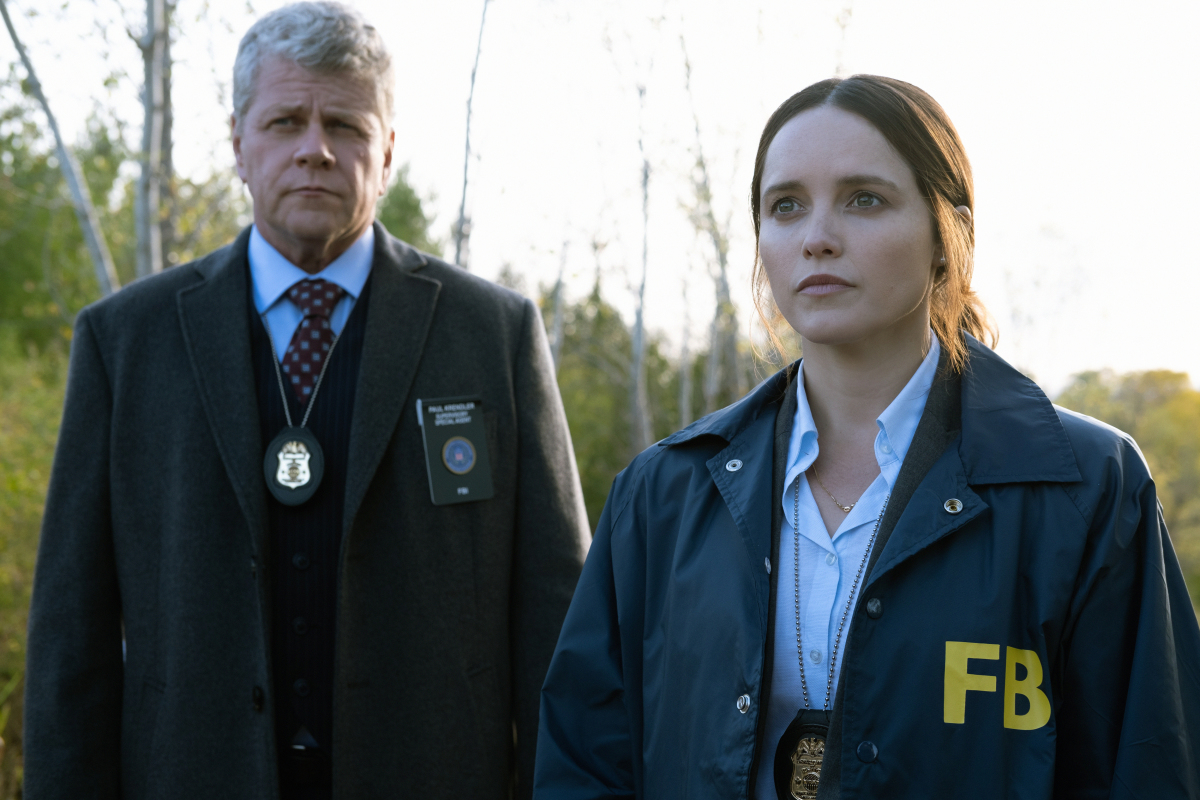Clarice Starling is difficult to make unremarkable, but that’s unfortunately the result of the new CBS series inspired by Thomas Harris’ iconic character from The Silence of the Lambs. Despite its mimicry of the nightmarish visual vibe of Bryan Fuller’s adaptation “Hannibal,” the show from executive producers Alex Kurtzman and Jenny Lumet devotes itself too much to cramming the sprawling strangeness of this world into a tidy procedural. From its supporting cast—with each character a particular type, per CBS’ “CSI” and “Criminal Minds” custom—to a main mystery that has all the blandness of a very special “Law and Order,” “Clarice” (which premieres on CBS on February 11) feels like a confluence of missed opportunities.
Rebecca Breeds takes over for Jodie Foster, who introduced the character in Jonathan Demme’s Oscar-winning “The Silence of the Lambs” 1991 film adaptation, and Julianne Moore, who stepped in for Ridley Scott’s 2001 sequel “Hannibal.” When “Clarice” begins, one year after the events of the former film, the FBI trainee has graduated into full agent status. (Knowing the events of “The Silence of the Lambs” is a must for watching the series.) She remains a source of fascination to journalists, colleagues, and even random strangers for catching and killing serial killer Buffalo Bill, but Clarice is mostly a mess.

She’s crashing on the couch of fellow FBI agent Ardelia Mapp (Devyn A. Tyler), and her diet basically consists of candy and soda. She can’t outrun jokes about Buffalo Bill from other FBI agents or the local cops with whom they work on various cases, or ignore the widespread speculation from the media (including the Tattler magazine that Harris worked into his novels) that she and serial killer Hannibal Lecter, who helped her catch Buffalo Bill, had some kind of sexual relationship. Clarice did her job, but she’s not relieved that she saved Buffalo Bill’s seventh victim, political daughter Catherine Martin (Marnee Carpenter). She’s haunted by the women she couldn’t help and plagued by nightmares of death’s head moths surrounding her, and her grasp on reality gets a little fuzzy sometimes. Her post-traumatic stress disorder is spiraling out of control, which is totally the right time to get pulled back into the field!
“Clarice” rearranges various characters from Harris’ novels to engineer Clarice’s removal from her hideout at the Behavioral Sciences Laboratory and back into active FBI field agent service, and there’s a little bit of Joe Penhall’s Netflix series “Mindhunter” in how Clarice persistently faces an uphill battle against other agents who don’t take her theorizing seriously. Senator Ruth Martin (Jayne Atkinson), now the attorney general, assigns Clarice to the Violent Criminal Apprehension Program (VICAP) she’s created to investigate and capture serial killers. FBI agent Paul Krendler (Michael Cudlitz), who previously blew off Clarice’s investigative work, is now her boss at VICAP, and makes his impression of her clear: “a junior agent who consistently presumes she knows better.” And her VICAP partners aren’t sure what to make of her. Sniper Tomas Esquivel (Lucca De Oliveira) is supportive and respectful, but seems like he’s hiding something. The older Murray Clarke (Nick Sandow) finds the entire concept of “behavioral sciences” laughable, and doesn’t hide his derision toward “delusional crap” from Clarice. And there’s also Agent Emin Grigoryan, who so far doesn’t really have any shades outside of being played by Kal Penn.

The makeup of that team, with Clarice as its sole female member, is an appropriate nod to what made so much of Harris’s initial characterization of this character so unique. As a young woman who grew up working class in a rural environment—an identity different from so many other FBI agents—she was able to spot things they didn’t. The first three episodes of the series, “The Silence is Over,” “Ghosts of Highway 20,” and “Are You Alright?”, do some of this right. A scene in “The Silence is Over” during which Clarice uses the clues left behind by a female victim’s body to craft a portrait of her is a continuation of what “The Silence of the Lambs” did so well, while her connection to women and children is the focus of “Ghosts of Highway 20,” in which the team travels to a separationist compound to defuse a hostage crisis with a fringe militia group. And Clarice’s friendship with Ardelia is given some particular attention, allowing Ardelia to become more of a standalone character in her own right. A file folder Ardelia carries that bears a scrawled “People I’m sending to Hell” is a little cutesy, but effective in terms of laying out the character’s priorities.
On a grander scale, though, “Clarice” is unnecessarily overcomplicated from the beginning. The series is trying to tell two stories, with one narrative about Clarice’s trauma, her forced meetings with a hostile therapist, and her tendency to mix up her present-day reality with her memories of the shootout with Bill in his basement, and the other about the episodic cases VICAP investigates, like that secessionist leader and possible corruption in the Baltimore Police Department. They don’t quite gel, and the problem is not just overly twisty writing and an uncompelling main mystery, but Clarice’s overall characterization and Breeds’ performance. Perhaps it’s the show’s overreliance on flashbacks and fantasy sequences, but Clarice in the present day feels hollow, like Breeds is going through the motions of deep psychological agony rather than truly communicating them. Her Clarice eats a lot of candy, and works out a lot to heavy metal, and defies direct orders from Krendler. But you don’t get a sense of what drives her each day, or what still horrifies her about the showdown with Bill.
“Clarice” recreates the nightmarish imagery of a show like “Hannibal,” with a fantasy sequence where Clarice imagines a woman’s hand thrusting out of the thorax of a death’s head moth, numerous glimpses into Buffalo Bill’s work room, with his sewing machine stitching together human flesh, and flashbacks into Catherine’s screams coming from the bottom of a dry well. Yet those images are so divorced of their impact, and so overused, that they irritate in their repetition rather than enlighten. And because Breeds doesn’t bring much lived-in depth to her Clarice, the series’ continual referencing of the events of the film—and Foster’s performance within it—don’t do her any favors.
“Clarice” raises the same question that so many reboots and remakes and sequels do: So what? Why return to a property like “The Silence of the Lambs” unless you have something new to say about it—about investigative work, or about the role of psychological profiling in our justice system, or about the different lived experiences of men and women who serve as officers of the law, or about how the lingering impact of trauma collapses our sense of ourselves? Maybe “Clarice” will eventually get there, but in its first three episodes, it doesn’t make much of a case for its return to this world or this character.
First three episodes screened for review.












